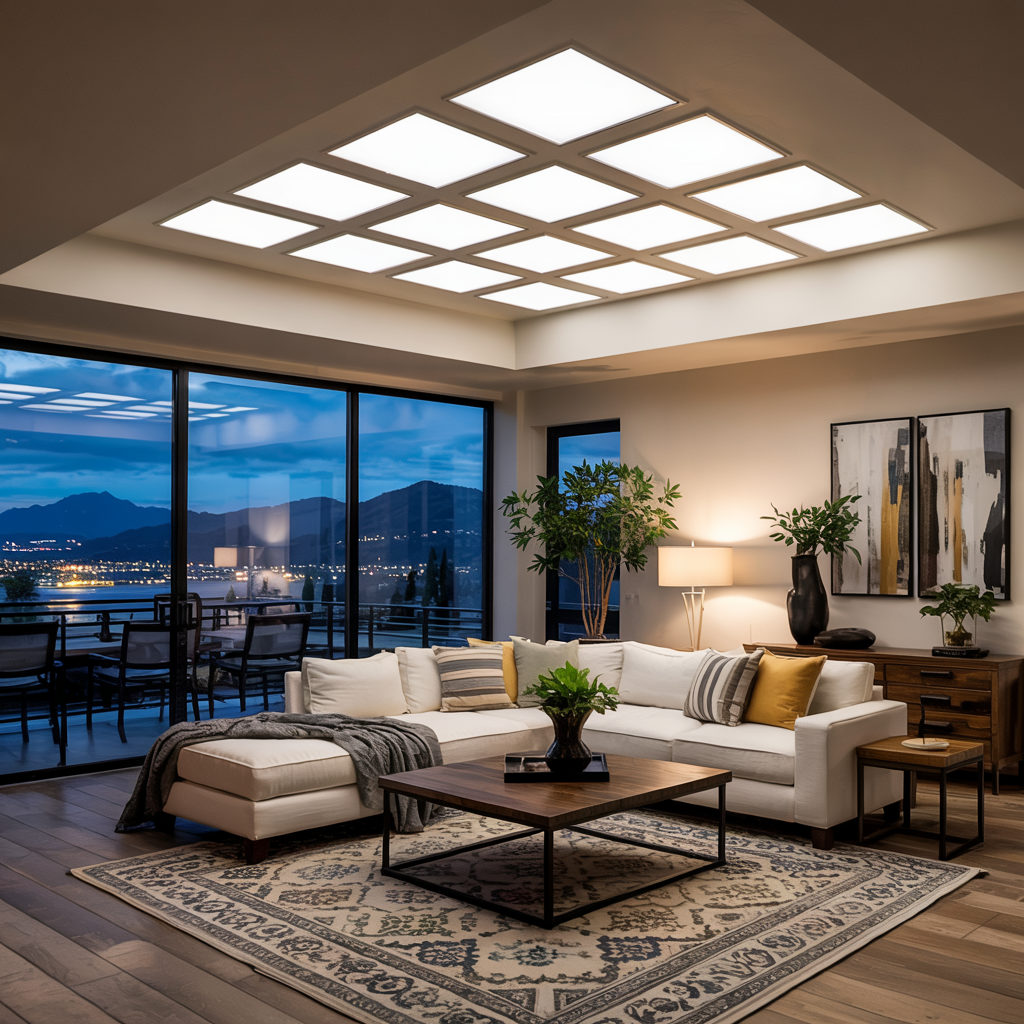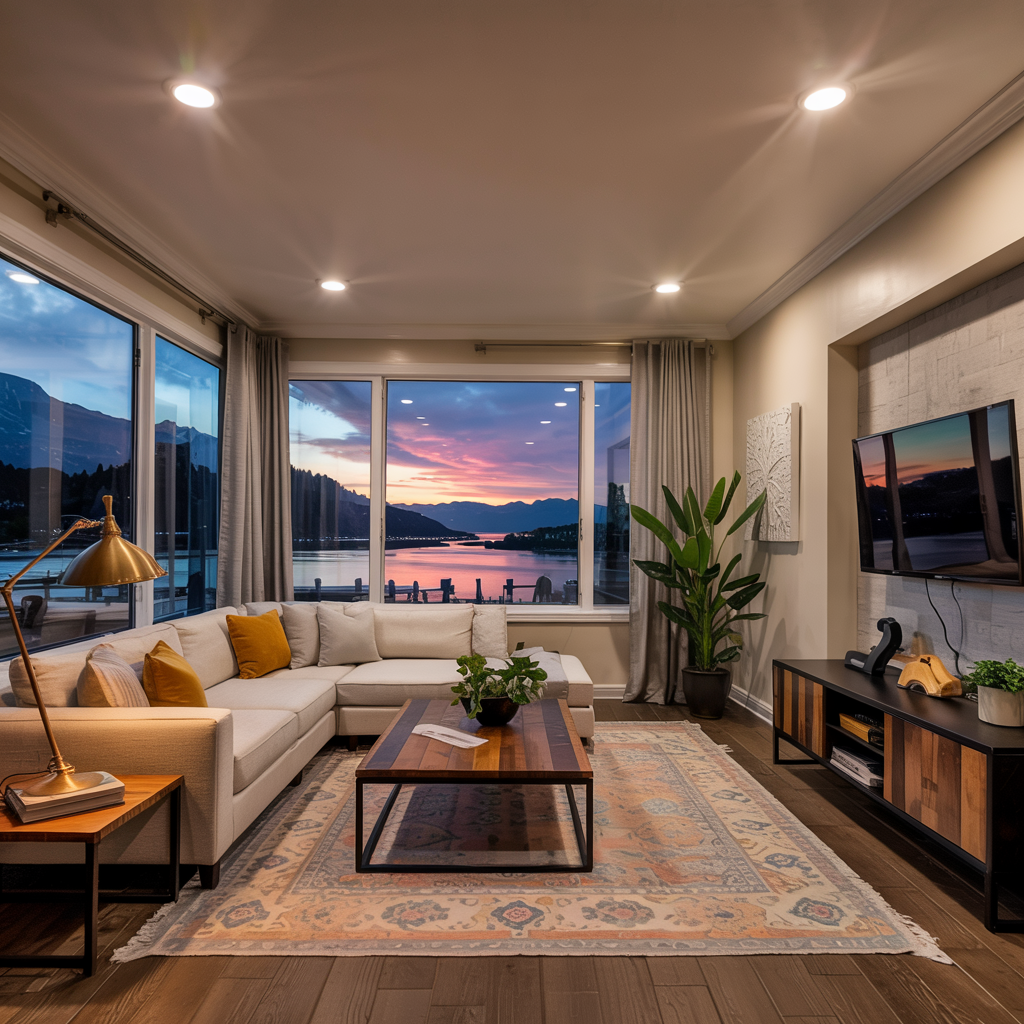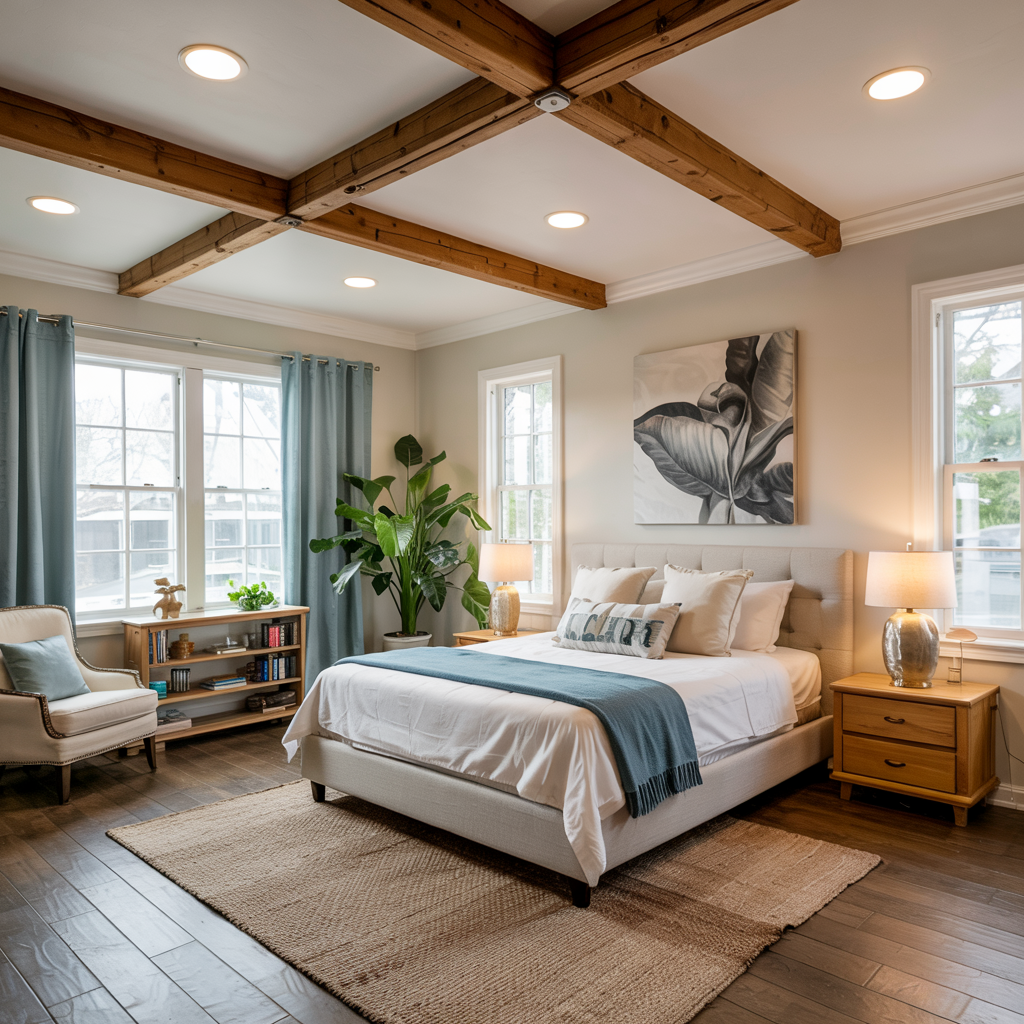How Many Can Lights for a 12×16 Room: Determining The Right Number Of Recessed Lights
Are you renovating your home and wondering about the best way to illuminate a 12×16 room? Choosing the right lighting can drastically impact the ambiance and functionality of a space. This comprehensive guide will help you determine how many can lights for a 12×16 room you’ll need, exploring factors like room purpose, light output, and…
Are you renovating your home and wondering about the best way to illuminate a 12×16 room? Choosing the right lighting can drastically impact the ambiance and functionality of a space. This comprehensive guide will help you determine how many can lights for a 12×16 room you’ll need, exploring factors like room purpose, light output, and placement. We’ll cover everything from calculating the necessary lumens to choosing the right fixtures, ensuring your 12×16 room is perfectly lit. Prepare to become a lighting expert!
Can lights, also known as recessed lights, are a popular choice for both residential and commercial spaces. They are embedded into the ceiling, providing a clean, sleek look while delivering efficient and focused illumination. Their versatility makes them ideal for various room types and lighting designs.
How Many Can Lights for a 12×16 Room?
For a 12×16 room (192 sq ft), you need approximately 8 can lights for balanced general lighting. Use the rule of one 6-inch can light per 25 square feet. Spacing them evenly, about 4 feet apart, ensures full coverage without dark spots. Adjust based on brightness preference or ceiling height.
Calculating the Required Lumens for a 12×16 Room
| Room Size | Total Area (sq ft) | Light Coverage per Can (sq ft) | Recommended Can Lights | Spacing Between Lights |
|---|---|---|---|---|
| 12 ft x 16 ft | 192 sq ft | 25 sq ft (for 6-inch can lights) | 8 | Approx. 4 feet |
The first step in determining the number of can lights is calculating the total lumens needed. Lumens measure the total amount of light emitted by a source. A 12×16 room (192 square feet) requires a different lumen amount than a smaller space. We’ll explore how to calculate this in detail.
Factors Affecting Lumen Requirements

Several factors influence the required lumens, including the room’s function (living room, bedroom, kitchen), ceiling height, wall color, and desired ambiance. Darker walls absorb more light, requiring more lumens for adequate brightness.
Read More: 15 Sloped Ceiling Lighting Ideas: Brighten Your Unique Spaces Beautifully
Calculating Lumens Per Square Foot
A general guideline is to aim for 1.5-3 lumens per square foot for ambient lighting. For a 192 square foot room, this translates to 288-576 lumens. However, this is just a starting point; we’ll refine this calculation based on other factors.
Determining the Light Output of Individual Can Lights

Once you’ve determined the total lumens required, you need to consider the light output of individual can lights. Can lights come in various wattages and lumens, influencing the number needed.
Different Wattage and Lumen Options
LED can lights are energy-efficient and long-lasting, making them the preferred choice. LED options range from 5W (around 450 lumens) to 15W (around 1350 lumens) and beyond, offering a wide range of brightness.
Matching Lumens to Your Room’s Needs
It’s crucial to carefully match the total required lumens (calculated earlier) to the lumen output of each can light. We’ll illustrate this with examples.
Optimal Can Light Placement for Even Illumination
Even illumination is key for a visually appealing and functional room. Incorrect placement can lead to dark spots and uneven brightness.
Spacing and Arrangement Strategies
A common rule of thumb is to space can lights 2-4 feet apart, depending on the size of the fixture and the room’s dimensions. For a 12×16 room, a grid pattern or staggered arrangement often works well.
Avoiding Glare and Hot Spots
Proper placement minimizes glare and hot spots, providing a comfortable and inviting atmosphere. We’ll discuss specific placement techniques to avoid these issues.
Read More: Circular Light Fixtures: A Complete Guide For You & Ideas
Types of Can Lights: Exploring Different Options

Choosing the correct type of can light impacts both the look and functionality of your space. Different types offer unique advantages.
LED vs. Halogen vs. Incandescent
LED can lights are the most energy-efficient and long-lasting option. While incandescent lights offer a warm glow, their energy inefficiency makes them less practical.
Color Temperature Considerations
Color temperature, measured in Kelvin (K), affects the perceived “warmth” or “coolness” of the light. Lower Kelvin values (2700K-3000K) provide a warmer light, suitable for bedrooms and living rooms. Higher values (5000K-6500K) produce cooler light, ideal for kitchens and bathrooms.
Read More: Illuminating Your Hallway: A Comprehensive Guide To Ceiling Lamps for Hallways
Factors to Consider Beyond Square Footage
Several factors beyond room size influence the number of can lights needed.
Ceiling Height and Room Shape
Higher ceilings may require more can lights to adequately illuminate the entire space. Irregular room shapes may necessitate adjusting the placement and number of lights.
Ambient Lighting vs. Task Lighting
Ambient lighting provides general illumination, while task lighting focuses on specific areas (e.g., reading lamp). A combination of both is typically ideal.
The Role of Ambient, Accent, and Task Lighting
Combining different types of lighting can enhance the room’s atmosphere and functionality.
Layering Lighting for Maximum Impact
Layering lighting involves using a combination of ambient, accent, and task lighting to create a versatile and well-lit space. We’ll discuss the benefits of this approach.
Creating Mood and Ambiance with Lighting
The right lighting can dramatically change the mood of a room. Using dimmers, varying color temperatures, and strategically placed lights can create a cozy and inviting atmosphere.
Budget Considerations and Cost-Effective Solutions
Budget constraints often influence the number of can lights that can be installed.
Choosing Affordable Yet Effective Can Lights
LED can lights provide an excellent balance of affordability, energy efficiency, and performance. We’ll discuss options for maximizing your budget.
Comparing Prices and Features
Before purchasing, comparing the prices and features of different can lights is crucial to find the best value for your money.
Installation Process: DIY vs. Professional Help
Installing can lights involves some electrical work, so understanding the installation process is crucial.
Understanding the Electrical Requirements
Before starting, ensure you understand the electrical requirements and safety precautions. Working with electricity requires caution.
DIY vs. Hiring an Electrician
While some individuals may feel comfortable tackling this project themselves, others may prefer hiring a qualified electrician to ensure safe and proper installation.
Troubleshooting Common Lighting Issues
Even with proper planning, unexpected lighting problems can arise.
Addressing Uneven Illumination and Dim Spots
Addressing uneven illumination often involves checking the placement of the can lights or adjusting the wattage.
Dealing with Flickering or Malfunctioning Lights
Flickering or malfunctioning lights may indicate a faulty bulb, wiring problem, or other electrical issue.
Comparing Different Brands and Models
Several brands offer a wide range of can lights, each with its own features and price point.
Choosing Reliable and Reputable Brands
Researching and choosing reliable brands ensures quality and longevity. We will provide examples of reputable manufacturers.
Reviewing Customer Feedback and Ratings
Reading customer reviews and ratings can help identify issues or potential problems with specific models.
Maintaining Your Can Lights for Optimal Performance
Regular maintenance ensures optimal performance and extends the lifespan of your can lights.
Cleaning and Dust Removal
Dust accumulation can reduce light output. Regular cleaning is essential to maintain brightness.
Replacing Bulbs as Needed
LED bulbs typically last longer than other types. Replacing bulbs as needed prevents decreased light output.
Frequently Asked Questions
How many lumens are needed per square foot?
A general guideline is 1.5-3 lumens per square foot for ambient lighting. However, this can vary depending on room function, ceiling height, and desired brightness.
Can I install can lights myself?
Installing can lights requires some electrical knowledge and can be dangerous. While DIY is possible for experienced individuals, hiring a qualified electrician is recommended for safety.
What is the average cost of can lights?
The cost varies depending on the brand, wattage, features, and type. Budget-friendly options are available, as are high-end, feature-rich models.
How often should I clean my can lights?
Cleaning your can lights every few months helps prevent dust accumulation and maintains optimal light output.
What is the average lifespan of LED can lights?
LED can lights typically last much longer than incandescent or halogen bulbs, often exceeding 50,000 hours.
What are the different types of finishes available for can lights?
Can lights are available in various finishes, including brushed nickel, polished chrome, white, and black, allowing you to match your decor.
Final Thoughts
Determining the right number of can lights for your 12×16 room involves careful planning and consideration of various factors. By following the steps outlined above, you can ensure your space is well-lit, functional, and visually appealing. Remember to account for square footage, desired lumens, placement, and the type of light fixtures you choose. Whether you opt for a DIY approach or hire a professional, the result will be a beautifully lit space that meets your specific needs. Now you’re ready to embark on your lighting project with confidence and transform your 12×16 room into a well-illuminated haven. Remember to check customer reviews and compare prices before making your final purchase. Good luck!

